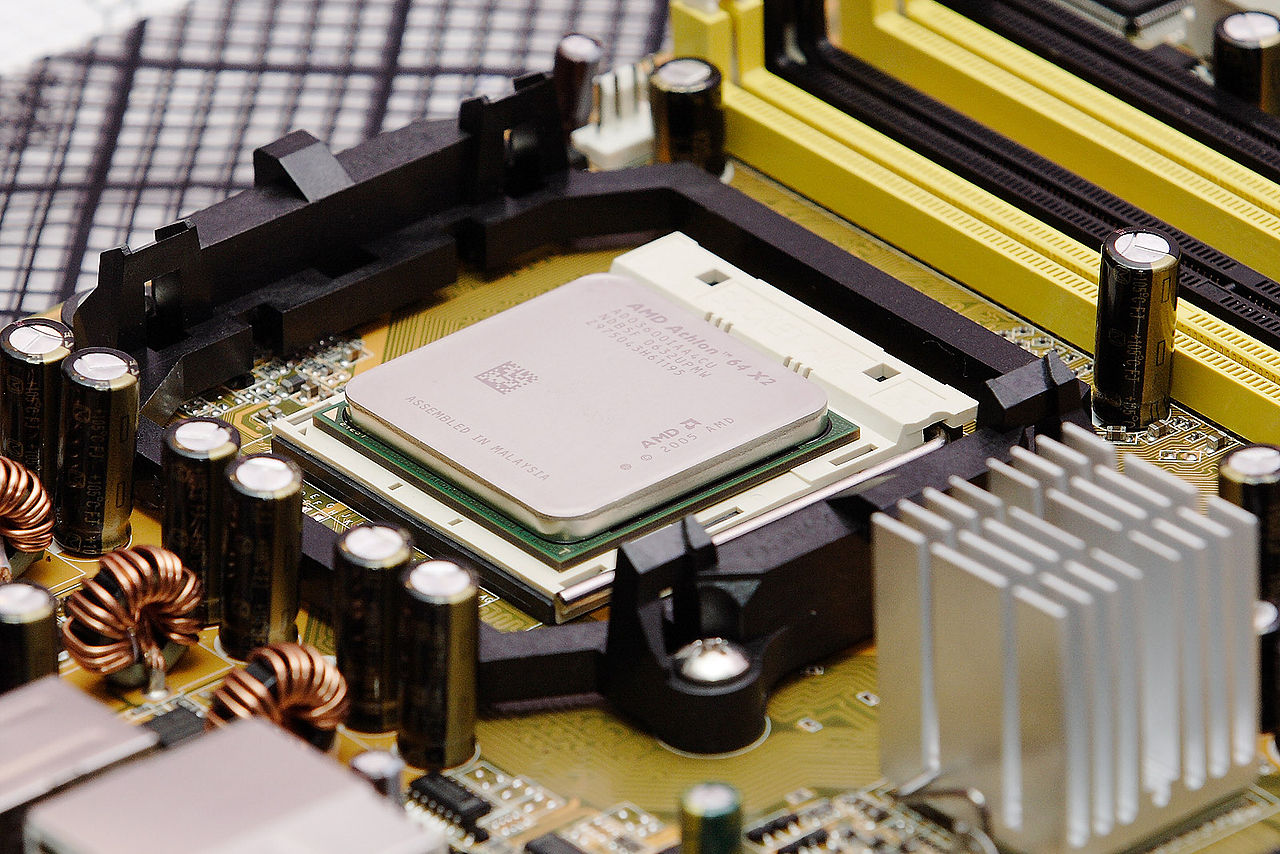<script async src="https://pagead2.googlesyndication.com/pagead/js/adsbygoogle.js?client=ca-pub-3836886491033397"
crossorigin="anonymous"></script>
<!-- Content Display Ad -->
<ins class="adsbygoogle"
style="display:block"
data-ad-client="ca-pub-3836886491033397"
data-ad-slot="3201248021"
data-ad-format="auto"
data-full-width-responsive="true"></ins>
<script>
(adsbygoogle = window.adsbygoogle || []).push({});
</script>{“type”:”block”,”srcClientIds”:[“1da323c3-f0bc-40d9-81ab-0f2bf95616c8″],”srcRootClientId”:””}
If you are wanting to know what factors affect CPU performance, then you will discover these factors right here. There are 6 factors, and each one plays an important part in how quickly a computer can respond to a user’s request for information. The six factors are …………..
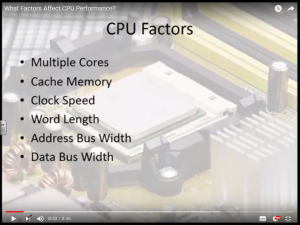
The factors Affecting CPU performance are :
- Multiple cores
- Cache memory,
- clock speed,
- word length,
- address bus width,
- data bus width.
Let’s start by looking at the multiple cores
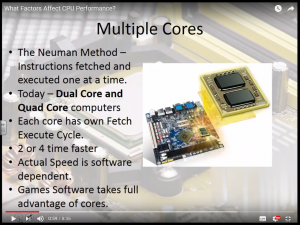
In the Anthony Neuman method, which is the method of computer architecture used by most computers, instructions are fetched and executed one at a time. Today however we now have dual core and quad core computers and each core has its own fetch and execute cycle.
This means that a processor can be up to two or four times faster than a normal processor . However the actual speed of the processor is dependent on the software that’s being run.
Not all software will take advantage of the quad and dual cores. Game software and video editing software are normally written to take full advantage of this core technology, whereas Word processor software or spreadsheet software maybe not.
Clock Speed
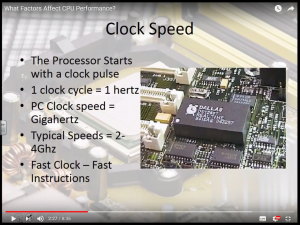
The processor requires a clock pulse in order to operate correctly, so a real time clock is provided to provide the clock pulse.
One clock cycle is equivalent to 1 Hz, that is one cycle per second.
A PC clock speed is normally in the gigahertz region. That is a billion cycles per second. Typical speeds are two to four gigahertz. The faster the clock speed, the faster the instructions can be processed by the processor.
Cache Memory
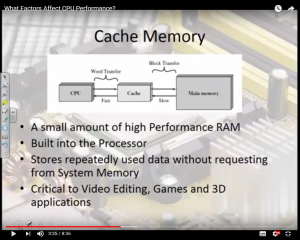
Cache memory is a small amount of high performance RAM (Random Access Memory) that is built into the processor. This RAM stores data which has been repeatedly used by the processor and it does not require a request from the system memory. This type of data is critical to the fast processing of video editing games and 3D applications. Using this type of memory will increase the speed of processing the data.
Word length

This word length is the word length of a CPU . This is the number of bits a CPU can process simultaneously. For example a 32-bit processor is faster than a 16 bit processor because it has a wider word length. A typical computer system word length is normally between 32 and 64 bits.
Here are three examples of how the CPU clock speed and word length can vary:
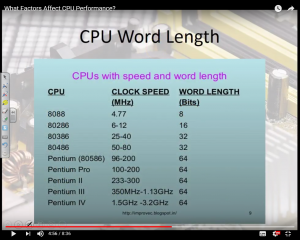
- The 8088 processor has a clock speed of 4.77 MHz and has an 8-bit word length.
- The 80486 has a clock speed of 50 to 80 MHz and has a word length of 32 bits.
- The Pentium 4 as a clock speed of 1.5 gigahertz to 3.2 gigahertz and has a word length of 64 bits.
Address Bus Width

The address bus width is the width of the address bus and determines the maximum amount of addressable locations. For example if you have an address bus of 8 bits, this means that you can have 256 addresses. These addresses or memory locations will be numbered 0 to 255.
Of course, the wider your address bus, the larger the memory that can be accessed.
Data Bus Width

The Data bus width is the number of bits that can be transferred simultaneously from one device to another. Usually the data bus is the same size as the address bus but not always. If the data bus is 16 bits and the address bus is 32 bits, so the data is fetched in 2 x 16 bit groups.
In summary
So to recap the factors affecting the performance of a CPU are as follows
Multiple cores, cache memory, clock speed, Word length, address bus width, data bus width.
